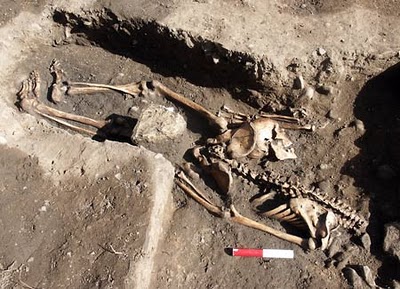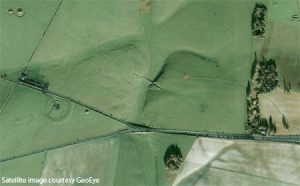 When in 79 ADthe Vesuvius errupted full force, it destroyed Herculaneum and Pompeii, covering them with tons of ash, rock and debris.At the same time, it left scientists with an ‘instant capture of time’, capturing daily life in those Roman towns.Now professor Brent Seales and his EDUCE – ‘Enhanced Digital Unwrapping for Conservation and Exploration‘ – team will have a crack at deciphering some of the items ‘preserved’ due to being in the air-tight vault of ashes: two 2,000-year-old papyrus scrolls found in a villa that is thought to have belonged to Julius Caesar‘s father in law Lucius Calpurnius Piso Caesoninus.
When in 79 ADthe Vesuvius errupted full force, it destroyed Herculaneum and Pompeii, covering them with tons of ash, rock and debris.At the same time, it left scientists with an ‘instant capture of time’, capturing daily life in those Roman towns.Now professor Brent Seales and his EDUCE – ‘Enhanced Digital Unwrapping for Conservation and Exploration‘ – team will have a crack at deciphering some of the items ‘preserved’ due to being in the air-tight vault of ashes: two 2,000-year-old papyrus scrolls found in a villa that is thought to have belonged to Julius Caesar‘s father in law Lucius Calpurnius Piso Caesoninus.
Most likely the scrolls will contain writings by Philodemus, one of the less famous Roman writers and philosophers.But even if they discover what was just a grocery list, this project will be most impressive due to the techniques used and the possibilities it offers in unrolling and deciphering the other – about 1,800 in total – papyrus scrolls found inside the Villa of the Papyri.
Professor Seales and his team will use a X-Ray CTscanning system to collect interior images of the scroll’s rolled-up pages.Then, he and his colleagues hope to digitally ‘unroll’ the scrolls on a computer screen so scholars can read them.Seales admits that there are possible hurdles, the biggest being the carbon-based ink thought to have been used on the scrolls. He says that since the papyrus in the scrolls was turned to carbon by the fury of Vesuvius, it might be impossible to visually separate the writing from the pages, even with powerful computer programs.
More about this deciphering project and previous ones by Professor Seales on Kentucky.com.
Image Restoration of Arbitrarily Warped Documents
Brent Seales previous project was ‘Image Restoration of Arbitrarily Warped Documents’, amongst others on the oldest known complete text of Homer’s Iliad, a copy dating back to the 10th century AD.An interesting paper appeared on the subject: ‘We present a framework for acquiring and restoring images of warped documents. The purpose of our restoration is to create a planar representation of a once planar document that has undergone an arbitrary and unknown rigid deformation. To accomplish this restoration, our framework acquires and flattens the 3D shape of a warped document to determine a nonlinear image transform that can correct for image distortion caused by the documents shape. Our framework is designed for use in library and museum digitization efforts where very old and badly damaged manuscripts are imaged.‘



